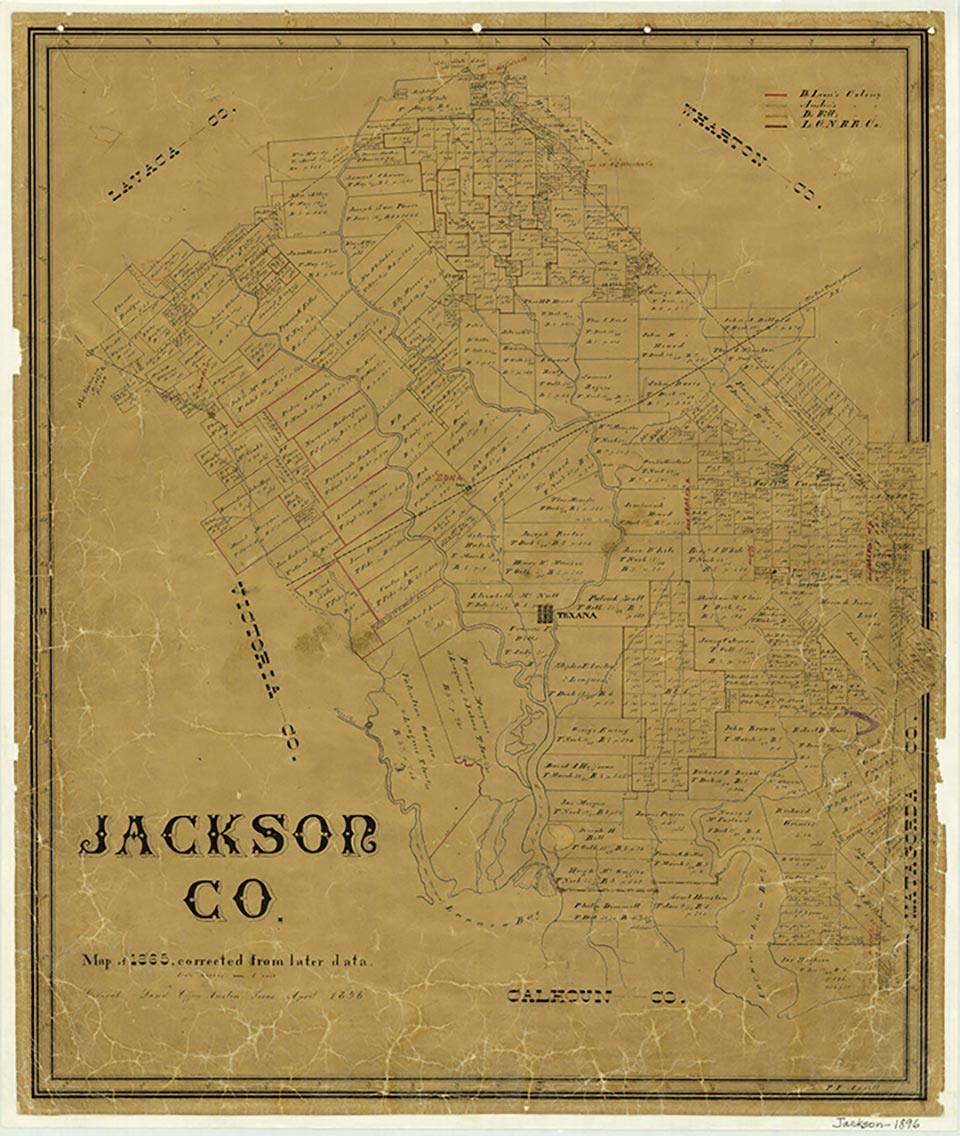Edna, the county seat of Jackson County, was established in 1882 when the New York, Texas and Mexican Railway line was built from Rosenberg to Victoria and bypassed Texana, then the county seat. Construction of the railroad began in September 1881. Edna was laid out on land owned by Mrs. Lucy Flournoy, who conveyed right-of-way and a half interest in the townsite to the railroad, which was promoted and built by Italian Count Joseph Telfener. The town was named for a daughter of the count. The NYT&M, nicknamed the "Macaroni," was constructed by Italian laborers, most of whom were brought from Lombardy by Telfener (see ITALIANS). After completion of the road, the majority of the crew remained in the area and established homes. The first train arrived on July 4, 1882; the first merchant was Gideon Egg, who moved his general merchandise store from Texana in 1882, and the first child born in the new community was Edna Louise Traylor.
In an election of January 22, 1883, residents voted to make Edna the county seat in place of Texana. The contract for a new courthouse was awarded on February 11, 1884. A post office opened in 1886. The first church congregations in Edna were the Methodist and Presbyterian, whose memberships moved from Texana almost intact. The latter brought their 1859 sanctuary with them overland eight miles. It was also used by other denominations for worship services. The oldest public building remaining in the county, the Texana Presbyterian Church, has been restored and serves in Edna as an area cultural center. It is listed on the National Register of Historic Places and is a recorded Texas historic landmark. The first newspaper in Edna was the Jackson County Progress. The newspaper plant, along with a large part of the business district, was destroyed in 1906 in the town's second disastrous fire. Succeeding the Progress was the Edna Herald, first published on November 22, 1906.
Edna is the gateway to 11,000-acre Lake Texana, which covers the site of Texana. The city has a hospital, convalescent home, library, museum, city park with swimming pool, three banks, two savings and loan associations, a country club with a nine-hole golf course, and Oak Creek Village, a retirement community. It is the center of a prosperous agricultural area with petroleum and natural gas production and has an active chamber of commerce, oilfield service industries, and two grain elevators. Edna had a population of 1,000 in 1896. By 1929 residents numbered 2,500 and by 1958, an estimated 6,500. In 1990 the population was 5,343 and in 2000 it was 5,899.
Is history important to you?
We need your support because we are a non-profit that relies upon contributions from our community in order to record and preserve the history of our state. Every dollar helps.
Brownson Malsch, Indianola-The Mother of Western Texas (Austin: Shoal Creek, 1977). S. G. Reed, A History of the Texas Railroads (Houston: St. Clair, 1941; rpt., New York: Arno, 1981). Ira T. Taylor, The Cavalcade of Jackson County (San Antonio: Naylor, 1938). Vertical Files, Dolph Briscoe Center for American History, University of Texas at Austin.
The following, adapted from the Chicago Manual of Style, 15th edition, is the preferred citation for this entry.
Brownson Malsch,
“Edna, TX,”
Handbook of Texas Online,
accessed April 19, 2024,
https://www.tshaonline.org/handbook/entries/edna-tx.
Published by the Texas State Historical Association.
TID:
HFE01
-
Original Publication Date:
-
1952
-
Most Recent Revision Date:
-
September 21, 2023
-

-
Linked Data from the Texas Almanac:
-
Place
-
Edna
-
Currently Exists
-
Yes
-
Place Type
-
Town
-
USGS ID
-
2410404
-
Town Fields
-
-
Has post office:
Yes
-
Is Incorporated:
Yes
-
Associated Names
-
-ville
Big Motte
Macaroni Station
-
Coordinates
-
-
Latitude:
28.97569810°
-
Longitude:
-96.64825600°
-
Population Counts
-
|
People
|
Year
|
|
1,752
|
1930
|
|
2,724
|
1940
|
|
3,855
|
1950
|
|
5,038
|
1960
|
|
5,332
|
1970
|
|
5,650
|
1980
|
|
5,343
|
1990
|
|
5,899
|
2000
|
|
5,499
|
2010
|
|
5,908
|
2019
|
|
5,987
|
2020
|
|
5,944
|
2021
|





